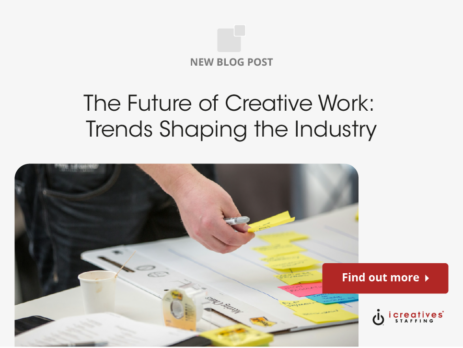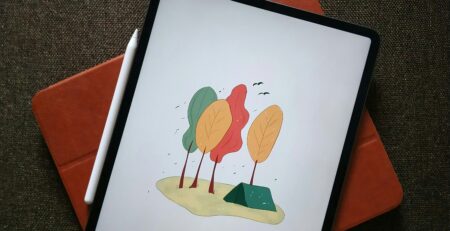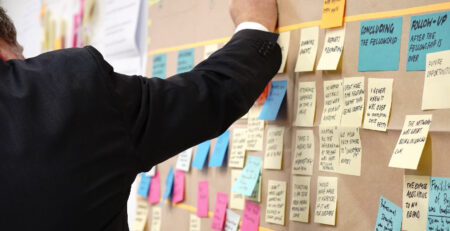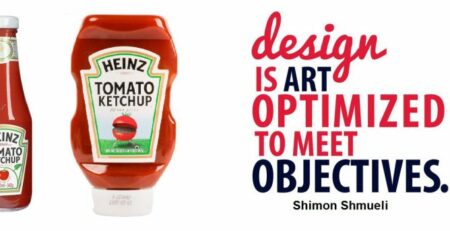The Future of Creative Work: Trends Shaping the Industry
The creative industries are experiencing a rapid transformation driven by technological advancements, evolving consumer behaviors, and new work paradigms. As we look towards the future, it is crucial to understand how these dynamic elements intertwine to shape the landscape of creative work. From increasing reliance on artificial intelligence and machine learning to the surge in remote working environments, creative professionals are navigating a plethora of changes that redefine how they work, collaborate, and express their creativity.
Technological innovation continues to be a significant catalyst for change, pushing the boundaries of what is possible in the creative fields. Whether it’s graphic design, filmmaking, or digital content creation, tools and platforms are becoming more sophisticated, enabling creators to produce high-quality work more efficiently than ever before. This shift is not only optimizing workflows but also changing the skill sets required in the industry.
The rise of remote work has also left a major impact on the creative sectors. The global pandemic accelerated the adoption of remote working setups, and this shift seems to be persistent. Creatives now need to be adept at digital communication and remote collaboration tools, as these are becoming standard practices. Moreover, this new norm is fostering a more inclusive global talent pool, allowing companies to tap into a wider array of creativity and innovation.
Sustainability and ethical considerations are becoming increasingly important in the creative industries as well. Consumers and businesses alike are prioritizing responsible practices, pushing creatives to adopt more sustainable methods and materials in their work. This ethical shift is reshaping brand identities and the creative processes behind them, emphasizing the importance of values alongside visuals.
Prepared to navigate these changes, both established and aspiring creatives need a comprehensive understanding of how to adapt and thrive. The future of creative work promises exciting opportunities but also presents new challenges that require an evolved approach to creativity and business strategy.
What role will AI and automation play in creative work?
How will remote work continue to influence creative industries?
What skills will be essential for creatives in the upcoming decade?
How can creatives integrate sustainability into their work?
What are the predicted market trends for the creative industry post-2025?
What role will AI and automation play in creative work?
– Introduction The emergence of AI and automation has sparked diverse speculation about its impact on the creative sectors. These technologies offer new ways to enhance creativity, streamline workflow, and create opportunities for innovation. However, there is also concern about the potential for these technologies to replace human creativity.
– Background AI applications in creative fields such as design, writing, and music production are already showing promising results. These systems can analyze large sets of data, extract patterns, and generate outcomes that can serve as a starting point for human creators.
– Current Uses Examples include AI-assisted design tools that help with the creation of logos, layouts, and even identifying color schemes that appeal to target demographics. Music production software utilizes AI to suggest chord progressions and harmonizations.
– Benefits The primary advantage of AI in creative work is its ability to handle tedious and repetitive tasks efficiently. This not only speeds up the creative process but also frees up creators to focus more on conceptual and strategic elements.
– Challenges Despite the benefits, the integration of AI also presents challenges such as the potential devaluation of basic creative skills and a detachment from the personal touch traditionally associated with creative works.
– Future Predictions It is predicted that AI will not replace creative jobs entirely but will rather evolve to become a collaborator in the creative process, enhancing the capabilities of human artists rather than substituting them.
Ethical Considerations Ethical considerations around AI include issues of copyright, ownership of AI-generated content, and the authenticity of creative outputs.
– Impact on Employment While some job roles may diminish, AI is likely to create new opportunities in areas that require overseeing AI operations, integrating human insights with machine-generated options, and maintaining the unique human aspects of creativity. –
Example Case Studies Studies of graphic designers using AI tools have shown increased productivity and ability to experiment with more complex design concepts.
As AI technology continues to develop, its role in creative industries is set to increase, providing tools that augment human creativity and innovate the very nature of creative work. For more insights into working with AI in creative roles, visit Transform Your Marketing with Freelance Creatives.
How will remote work continue to influence creative industries?
Remote work has undeniably transformed the landscape of the creative industries. The ability to work from anywhere has democratized opportunities across geographical boundaries, allowing businesses to harness talent from across the globe. This shift is influencing various aspects of creative work including collaboration, productivity, and workplace culture.
– Expansion of Talent Pool Companies are no longer limited to hiring talent in close proximity to their offices. This global talent pool enables access to diverse skill sets and creative perspectives, enriching the creative output.
– Collaboration Tools The reliance on digital collaboration tools has increased, facilitating seamless communication between remote teams. Tools such as video calls, project management software, and real-time editing platforms are integral to the remote creative process.
– Productivity Variations While some creatives thrive in a home environment free from office distractions, others struggle with overwork or lack of collaboration. The remote work era demands a balance, requiring companies to understand and address these varied employee needs.
– Cultural Impact Remote work can dilute a company’s culture, posing challenges in maintaining a unified creative vision. Creative leaders must cultivate a strong remote culture that supports and inspires employees.
– Sustainable Practices By reducing the need for commutes and office resources, remote work contributes to environmental sustainability, aligning with the greening policies of creative companies.
– Inclusion and Accessibility Remote work settings can be more inclusive for individuals with disabilities or those who need to work from home for personal reasons, making the creative field more accessible.
– Client Interactions The dynamics of client interactions have changed; virtual pitches and presentations are now commonplace. Creatives need to adapt their strategies to communicate effectively in this new medium.
– Future Outlook Continued technological advancements will further empower remote creative work. However, companies must invest in strategies that mitigate the challenges posed by fully remote operations.
– Expert Opinions Leading industry experts suggest refining remote work policies to foster creativity and productivity while ensuring emotional and professional well-being. –
Recommendations Creative companies should leverage technology to enhance remote workflows and consider regular virtual meet-ups to preserve team dynamics. More on mastering remote work dynamics can be explored at Hiring Remote Illustrators.

What skills will be essential for creatives in the upcoming decade?
The creative industry is shifting, and with it, the skills required to succeed are evolving. The next decade will demand a blend of traditional artistic skills and new proficiencies driven by technological advancements and changing market dynamics.
– Technical Proficiency As tools and platforms become more advanced, technical skills in software like Adobe Creative Suite, Sketch, and Figma, highlighted as essentials according to Top 10 UX/UI Design Tools, will be crucial for most creatives.
– Digital Collaboration Skills in remote collaboration tools and techniques will be vital due to the prevalence of remote working setups.
– Adaptability The ability to quickly adapt to new tools, environments, and trends will be a valuable trait as the pace of change accelerates in the creative industries. – Cross-Disciplinary Knowledge Knowledge spanning various fields such as marketing, psychology, and technology will enhance a creative’s ability to produce relevant and impactful work.
– Social Media Expertise Understanding and leveraging social media platforms will be necessary as these channels continue to dominate the marketing and distribution of creative content.
– Sustainable Practices Skills related to sustainable and ethical design are becoming more sought after, aligning with global movements towards environmental consciousness.
– Creative Thinking While technical skills are essential, the core of creativity—idea generation, conceptual thinking, and problem-solving—remains irreplaceable and highly valued.
– Data Literacy Being able to work with data to inform design decisions and creative strategies will set apart leading creatives in the industry.
– Client Communication Strong communication skills to articulate creative ideas and foster client relationships will be imperative.
– Continuous Learning The commitment to continual learning and up-skilling in response to an ever-evolving industry landscape will be crucial for long-term success. Employers and potential creatives can find further insight on these evolving skills at Mastering Job Interviews.
How can creatives integrate sustainability into their work?
As environmental concerns become more pressing, the creative industry is being called upon to play a significant role in promoting sustainability. This involves rethinking materials, processes, and the overall impact of creative outputs.
- Material Choices Creatives can choose sustainable materials for their projects, such as recycled fabrics in fashion design or eco-friendly inks in print production.
- Digital Optimization By optimizing digital work, creatives reduce the need for physical materials and waste. This includes digital proofs in graphic design or virtual prototyping in product design.
- Sustainable Workflows Developing workflows that minimize waste, conserve energy, and reduce carbon footprints is becoming a priority. This could involve streamlined logistics or energy-efficient studios.
- Client Education Educating clients about the benefits and possibilities of sustainable practices is crucial. This not only influences clients’ decisions but also elevates the standards of the industry.
- Collaboration for Change Working with other creatives, suppliers, and environmental experts to develop innovative sustainable solutions can amplify impact.
- Certifications and Standards Pursuing sustainability certifications and adhering to industry standards can help creatives validate their efforts and encourage wider adoption.
- Cultural Influence Using creative platforms to promote and normalize sustainable habits can have a substantial cultural impact, influencing public opinion and consumer behavior.
- Regulatory Compliance Awareness and compliance with environmental regulations ensure that creative practices not only meet current legal standards but are also future-proof.
- Measure and Report Regularly measuring the environmental impact of creative work and reporting these findings can help track progress and make informed adjustments.
- Case Studies Showcasing successful sustainable projects can serve as a benchmark and inspiration for others in the industry. For more insights into integrating sustainability in creative work, please visit Transforming Your Brand with a Director of Packaging Design.
What are the predicted market trends for the creative industry post-2025?
As we move post-2025, the creative industry is anticipated to be influenced by several major trends that will shape its direction and opportunities.
- Augmented Reality and Virtual Reality The use of AR and VR is expected to grow, offering new ways for creatives to engage consumers and create immersive experiences.
- Niche Specialization With the saturation of generalist skills, there will be a higher demand for specialists in niche areas of the creative sector.
- Increased Consumer Participation Brands will likely encourage greater consumer participation in the creative process, using tools that allow customization and personalization.
- Ethical and Transparent Practices The demand for transparency in production processes and ethical considerations in creative outputs will continue to rise.
- Integration of Data Analytics Data will play a crucial role in creative decision-making, with analytics tools becoming essential in understanding consumer behaviors and preferences.
- Expansion into New Media Creatives will explore newer media formats and platforms as technology evolves, staying ahead in the competitive landscape.
- Freelance Flexibility The freelance model will expand, driven by both worker preference for flexibility and businesses’ need for specialized skills on demand.
- Global Collaboration Cross-border collaborations will increase, facilitated by advanced communication technologies and globalized business operations.
- Sociocultural Impact Creatives will increasingly be seen as agents of sociocultural change, influencing societal issues through their work.
- Economic Influence The creative industry’s contribution to the global economy will be more pronounced, driving new policies and investments in creative sectors. Continued exploration and adaptation to these trends can be understood further through Mistakes in Hiring Video Production Talent.
Conclusion
The future of creative work is rich with opportunities and challenges that are poised to redefine the landscape of the industry. As we move forward, the integration of technology, emphasis on sustainability, and the evolving nature of work environments will be critical areas to watch. The ability of creatives to adapt and thrive in this changing environment will not only benefit their careers but also have a significant impact on the broader societal and cultural contexts.
Understanding and leveraging the trends discussed here will be essential for those in the creative fields to remain relevant and competitive. Moreover, these trends offer a roadmap for businesses and educational institutions on how to best prepare the next generation of creatives for a successful and impactful career.
The future promises an exciting era for the creative industries, driven by innovation, inclusivity, and intelligent adaptation. By embracing these changes, creatives and creative enterprises can look forward to contributing to a dynamic and vibrant future.
For those navigating the current shifts and looking towards future trends, the journey will require continual learning, flexibility, and a proactive approach to embracing new opportunities and overcoming potential challenges.
Embracing these changes with enthusiasm and strategic thought will pave the way to not just surviving but thriving in the evolving creative landscape.
In today’s competitive market, finding the right creative and marketing expert can be a challenge. But with icreatives, you’re in experienced hands. With 37 years in staffing and a track record of matching more than 10,000 employees to over 1,000 companies worldwide, we know how to connect you with the best. Plus, you only pay if you hire—there’s no risk, only results. Ready to find your perfect creative or marketing expert? HIRE WITH ICREATIVES today!












